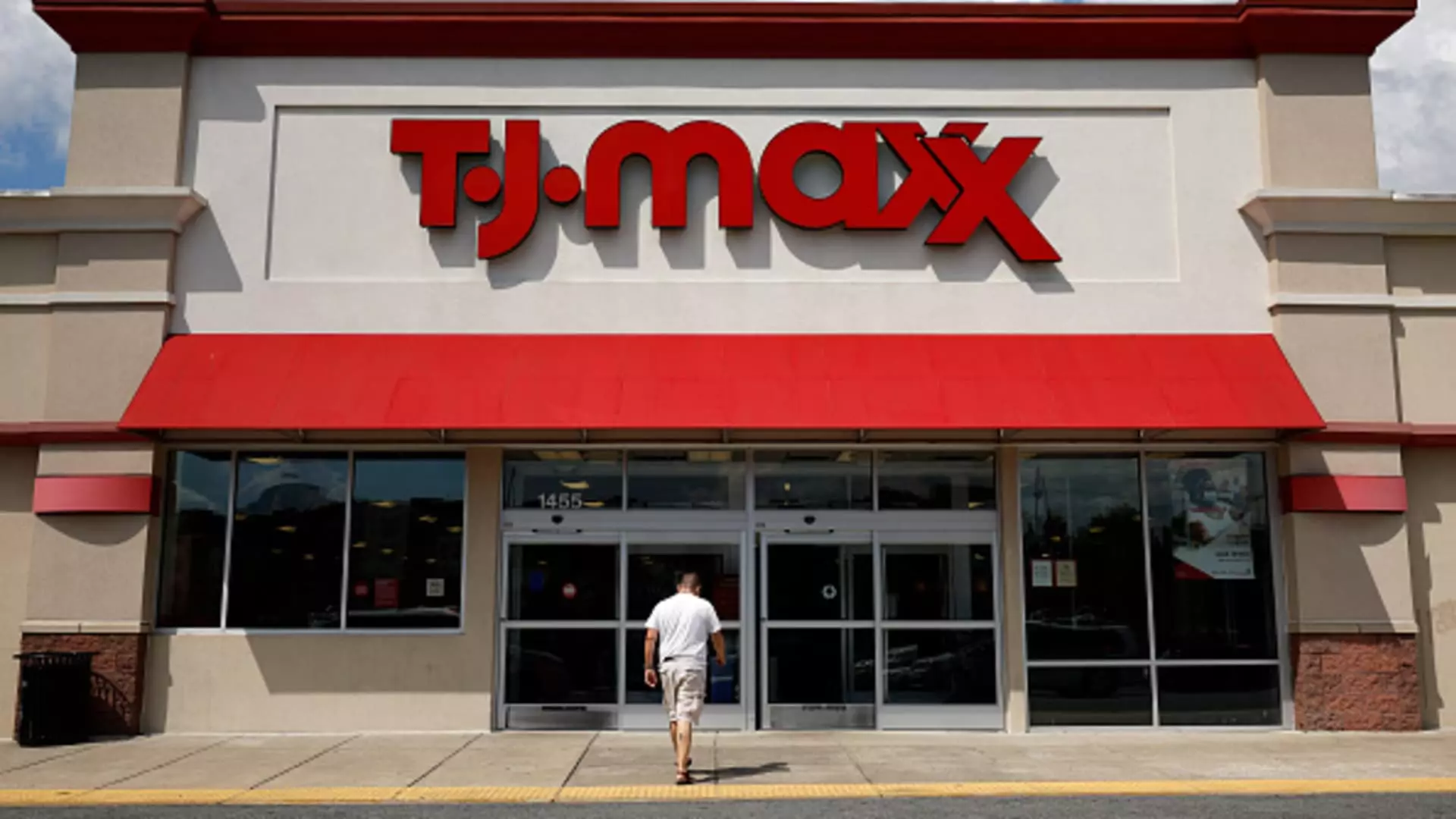In the latest earnings report, TJX Companies, the powerhouse behind T.J. Maxx, Marshalls, and HomeGoods, boasts a seemingly unstoppable performance, beating Wall Street’s expectations and raising guidance. However, beneath this veneer of success lies a fundamental misunderstanding of the sustainability of such results. The narrative of resilience—propelled by consumers still craving bargains—obscures the systemic vulnerabilities threatening the broader retail landscape. While TJX’s short-term gains appear impressive, they may be illusory, masking deeper economic and geopolitical tectonic shifts that could undermine its future prospects.
The bullish tone emanating from TJX’s leadership centers on the belief that their flexible purchasing model, buying excess stock after importation, shields them from tariffs and trade disruptions. Yet, this very advantage is a fragile hedge. Relying on “inefficiencies” in global supply chains offers only temporary relief and ignores the mounting pressures facing the retail sector: inflation eroding consumer disposable income, geopolitical tensions inflating costs, and the rising tide of online competition rendering traditional brick-and-mortar sales less resilient than they seem. As the company projects continued strength into fiscal 2026, skepticism is warranted. Are they overlooking the decisive shifts in consumer behavior and supply chain fragility that could ultimately diminish their gains?
Optimism Based on Short-Term Metrics—A Dangerous Delusion
TJX’s recent results—$14.4 billion in revenue, a 7% increase year-over-year, and a 4% rise in comparable sales—are undeniably positive. However, these figures must be viewed through a critical lens. The retail environment is undergoing a seismic shift that these numbers do not fully capture. While off-price retailers may currently benefit from consumers seeking value amid inflationary pressures, this advantage is unlikely to be durable. The economic winds are shifting: wages are not keeping pace with mounting costs, and savings buffers are thinning as inflation persists.
Furthermore, TJX’s optimism appears to hinge on the assumption that current tariff policies will remain static. Yet, trade negotiations are inherently unpredictable, and further tariffs or trade restrictions could dismantle the fragile profitability they count on. Their confidence may be misplaced—assuming a facade of stability that can vanish overnight as geopolitical tensions escalate.
While company executives celebrate their sales growth and share price increase, this success must be scrutinized within a broader context of economic uncertainty. Short-term improvements often mask underlying vulnerabilities—overleveraged supply chains, inflationary pressures, and strategic complacency—that could turn these gains into losses in the future.
The Illusion of Market Share and Future Stability
Industry analysts highlight TJX’s ability to purchase surplus merchandise after importation as a competitive edge—one that allows them to sidestep some tariff costs. Yet, this strategy is not an innovative shield but a crutch that relies on a very specific set of circumstances. As tariffs tighten or fluctuate, the cost advantages diminish, and TJX’s positioning could erode faster than anticipated.
Additionally, the retail landscape is fragmenting. Traditional off-price retailers may temporarily capitalize on consumer savings fatigue, but the broader shift towards e-commerce and direct-to-consumer models reduces the relevance of brick-and-mortar stores. TJX’s aggressive expansion could reach a saturation point, and their current growth rates may prove unsustainable in the long run. An overreliance on market share gains, especially in a volatile economic environment, is risky at best.
Ultimately, the hope that TJX can continue to thrive without significant disruption relies on assumptions that are increasingly fragile. The current success story might be a brief flash of resilience—one sustained more by convenience and short-term demand than by strategic foresight. As the economic landscape evolves, these retailers will need to demonstrate not just capacity for temporary adaptation but true resilience rooted in innovation and adaptability. Until then, their seemingly unstoppable ascent remains a precarious illusion.

